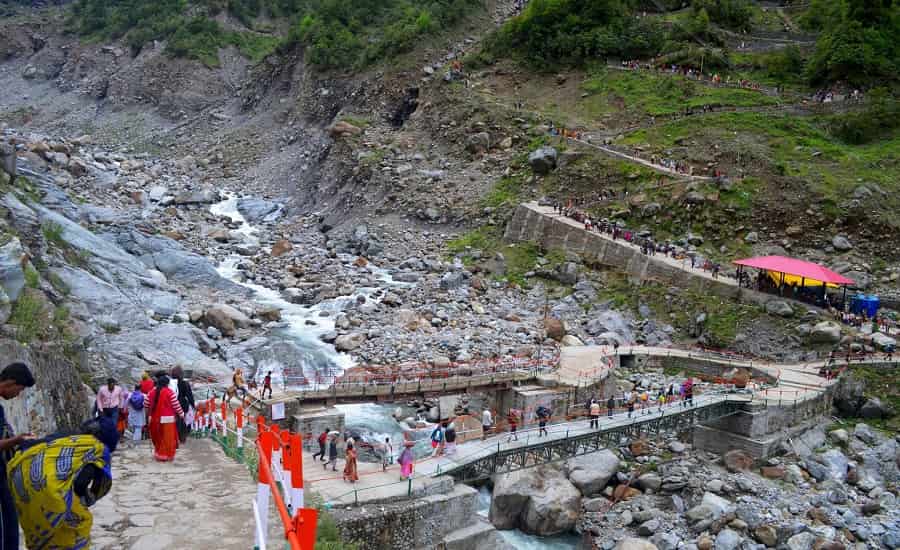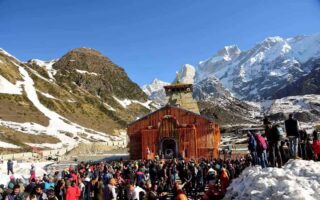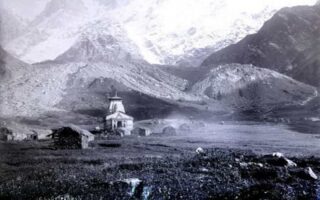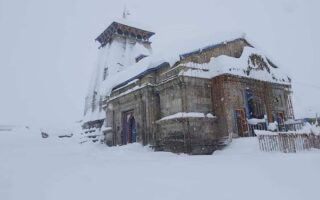Kedarnath, as known by all is a holy place. Every year great crowds flock to this sacred land for a pilgrimage. The ancient Shiva temple is located in the Kedarnath Wildlife Sanctuary. It is said to have been built in the 9th Century by Adi Shankaracharya. The pilgrimage here is believed to be one of the four most important ones in the Hindu tradition. It is 18oo m to more than 3500 m. high. Here one feels like heaven is meeting Earth, water is meeting stone and the Mortal man is meeting cosmos.

Preparing for the Trek
Before embarking on the Kedarnath trek, it is crucial to understand the challenges and significance of this spiritual journey. The trek takes you through rugged terrains, steep slopes, and unpredictable weather conditions, demanding both physical fitness and mental endurance. To ensure a successful and enjoyable experience, proper preparation is key.
Understanding the Kedarnath Trek
The Kedarnath trek is a pilgrimage route that has been traversed by millions of devotees seeking Lord Shiva’s blessings. The trek spans approximately 16 kilometers and is filled with breathtaking views of snow-capped peaks, lush meadows, and pristine rivers. Along the way, you will encounter numerous small settlements and rest points where you can refuel and rest.
Best Time to Visit Kedarnath
The best time to visit Kedarnath for trekking is during the months of May to June and September to October. These periods are considered the ideal trekking seasons due to favorable weather and pleasant conditions. Here’s a breakdown of why these months are recommended:
May to June:
- This is the summer season, and the weather is generally mild and pleasant during this time.
- The snow from the winter starts to melt, making the trails accessible for trekkers.
- The picturesque landscapes are adorned with colorful flowers and lush greenery, offering a breathtaking experience.
- The temperatures during the day are comfortable for trekking, ranging from 10°C to 20°C.
September to October:
- This is the post-monsoon and autumn season, offering clear skies and stunning views of the surrounding Himalayan peaks.
- The monsoon rains have subsided, making the trails safe and less slippery.
- The weather is still relatively mild, with daytime temperatures ranging from 15°C to 20°C, making it comfortable for trekking.
- The crowds are thinner compared to the peak summer season, allowing for a more peaceful and serene trekking experience.
Please keep in mind that the weather in the mountains can be unpredictable, and it’s always essential to check the weather forecast and consult with local authorities or experienced trek organizers before planning your Kedarnath trek. Additionally, the Kedarnath region experiences extreme weather during the winter months (November to April), with heavy snowfall and extremely cold temperatures, making it unsuitable for trekking during this time.
Physical Fitness and Mental Preparation
Trekking to Kedarnath involves walking long distances on steep and uneven terrain, often at high altitudes. Therefore, it is essential to be physically fit and prepared for the journey. Here are some tips to improve your physical fitness for the Kedarnath trek:
- Cardiovascular Endurance: Engage in regular cardio exercises such as walking, jogging, cycling, or swimming to build stamina and endurance.
- Leg Strength: Strengthen your leg muscles through exercises like squats, lunges, and stair climbing to handle the uphill and downhill sections of the trek.
- Core Strength: Work on your core muscles with exercises like planks and crunches to maintain balance and stability during the trek.
- Flexibility: Perform stretching exercises to enhance flexibility, as it helps reduce the risk of injuries and muscle cramps.
- Gradual Training: Start with shorter and easier treks to acclimatize your body to trekking conditions before attempting the Kedarnath trek.
Mental Preparation for Kedarnath Trek:
- Mental preparation is equally important as physical fitness for a successful trek. Here are some tips to mentally prepare for the Kedarnath trek:
- Positive Mindset: Cultivate a positive attitude and believe in your ability to complete the trek. A positive mindset can help you overcome challenges along the way.
- Mental Endurance: Prepare yourself for long hours of trekking and challenging terrains. Visualize yourself completing the trek successfully.
- Coping with Altitude: Be mentally prepared for the effects of high altitude, such as shortness of breath and fatigue. Stay calm and take breaks when needed.
- Embrace the Journey: Enjoy the natural beauty and serenity of the surroundings. Embrace the experience and be open to new adventures.
- Mental Relaxation Techniques: Practice relaxation techniques like meditation or deep breathing to stay calm and composed during stressful situations.
- Team Spirit: If trekking with a group, foster a sense of camaraderie and teamwork. Supporting and encouraging each other can boost morale and make the trek more enjoyable.
Packing Essentials for the Journey
As you venture into the lap of the Himalayas, packing the right gear is essential for a smooth trekking experience. Remember, every item you carry will be on your back during the entire journey.
Clothing and Footwear
Pack comfortable, moisture-wicking clothing that allows for easy movement. Layering is crucial, as temperatures can vary significantly during the day. Don’t forget to carry a sturdy pair of trekking shoes with excellent grip and ankle support.
Camping Gear and Accessories
Carry a lightweight and waterproof tent, a warm sleeping bag, and a compact camping stove. Additionally, pack a headlamp, Swiss army knife, and trekking poles to assist you during the journey.
Personal and Medical Supplies
Bring personal identification, cash, and a map of the trekking route. Don’t forget your prescribed medications, a basic first-aid kit, and water purification tablets.
Reaching the Base Camp
The journey to Kedarnath begins in the spiritual city of Rishikesh, where you can soak in the divine energy of the Ganges. From there, you will proceed to Gaurikund, which serves as the starting point of the trek.
Traveling to Rishikesh
To reach Rishikesh, you can take a flight to Dehradun’s Jolly Grant Airport or a train to Haridwar Railway Station. Rishikesh is well-connected by road from major cities in India.
Rishikesh to Gaurikund: The Starting Point
From Rishikesh, take a picturesque road journey to Gaurikund, a small village known for its thermal springs. The drive offers breathtaking views of the Ganges and the surrounding mountains.
Embarking on the Trek
The actual trekking adventure begins from Gaurikund, where you will start your journey towards the Kedarnath Temple. The trek is divided into two days to ensure a comfortable and enjoyable experience.
Day 1: Gaurikund to Kedarnath Base Camp
The first day involves a 14-kilometer trek from Gaurikund to the Kedarnath Base Camp. The trail takes you through dense forests and charming villages, allowing you to experience the local culture.
Day 2: Kedarnath Base Camp to Kedarnath Temple
On the second day, trek approximately 4 kilometers from the base camp to the revered Kedarnath Temple. The awe-inspiring views and spiritual aura make this part of the journey unforgettable.
Experiencing Kedarnath
Kedarnath is not just a trek; it is a divine encounter that leaves a lasting impression on every soul that visits this sacred land. The Kedarnath Temple stands as a symbol of faith and devotion.
Kedarnath Temple: A Divine Encounter
Built with massive stone slabs, the Kedarnath Temple is an architectural marvel. It is believed to have been established by Adi Shankaracharya in the 8th century and holds immense religious significance.
Kedarnath’s Mystical Legends
Kedarnath is steeped in ancient legends that add to its mystical charm. The temple is one of the 12 Jyotirlingas and is believed to be the place where Lord Shiva granted Pandavas salvation.
Exploring the Scenic Beauty
The Kedarnath trek is not only a spiritual journey but also an opportunity to witness the unparalleled beauty of nature.
Vasuki Tal: The Crystal Clear Lake
A 7-kilometer trek from Kedarnath leads to Vasuki Tal, a high-altitude glacial lake surrounded by snow-capped peaks. The tranquil ambiance makes it an ideal spot for meditation.
Chorabari Tal (Gandhi Sarovar): A Serene Beauty
Located just 1 kilometer away from Kedarnath, Chorabari Tal is a stunning lake that captivates trekkers with its picturesque beauty.
Bhairavnath Temple: Where Faith Meets Fearlessness
A short trek from Kedarnath takes you to the Bhairavnath Temple, dedicated to Lord Bhairava, the protector of Kedarnath.
Challenges and Precautions
Trekking in the Himalayas is a test of physical and mental strength, and Kedarnath is no exception.
Dealing with Altitude Sickness
Altitude sickness can be a significant concern during the trek. Acclimatize yourself to the changing altitudes and stay hydrated.
Weather and Terrain Challenges
The weather in the Himalayas can be unpredictable. Be prepared for sudden temperature drops and carry suitable clothing.
Environmental Responsibility
Trek responsibly and maintain the pristine beauty of the region. Avoid littering and follow the ‘Leave No Trace’ principle.
Capturing Memories: Photography Tips
Preserving the beauty of Kedarnath through photographs is a rewarding experience.
Preserving the Beauty Responsibly
Capture the scenic landscapes without causing any harm to the environment.
Best Camera Gear for the Trek
Choose lightweight and durable camera equipment to document your journey effectively.
Embracing the Local Culture
Interacting with the locals and experiencing their culture enriches the trekking experience.
The Warmth of the Pahadi People
The locals are known for their hospitality and kindness. Respect their traditions and engage in meaningful conversations.
Traditional Cuisine of Kedarnath
- The traditional cuisine of Kedarnath offers a delightful blend of Garhwali flavors and local ingredients.
- From wholesome dal and rice to delectable local sweets, Kedarnath’s traditional dishes reflect the region’s rich culinary heritage.
- Savouring the authentic taste of Kedarnath’s traditional cuisine adds a unique and memorable aspect to the trekking experience.
Conclusion
The Kedarnath trek is a transformative journey that not only tests your physical endurance but also touches your soul with its spiritual aura. As you trek through the mesmerizing landscapes of the Himalayas, you will find yourself connected to nature and spirituality in a profound way.
FAQs
Is prior trekking experience necessary for the Kedarnath trek?
Prior trekking experience is not mandatory, but a reasonable level of physical fitness is essential.
Are there any age restrictions for the trek?
While there are no strict age restrictions, it is advisable for participants to be in good health and above the age of 12 years.
What permits or permissions are required for the trek?
Trekkers need to obtain a permit from the Uttarakhand government to enter the Kedarnath Wildlife Sanctuary.
Is the Kedarnath trek safe for solo trekkers?
The Kedarnath trek is generally safe for solo trekkers, but it is recommended to join a guided group for a more secure experience.
What are the emergency services available during the trek?
Basic medical facilities and emergency services are available at certain points on the trek, but it is best to carry a first-aid kit and medications.


